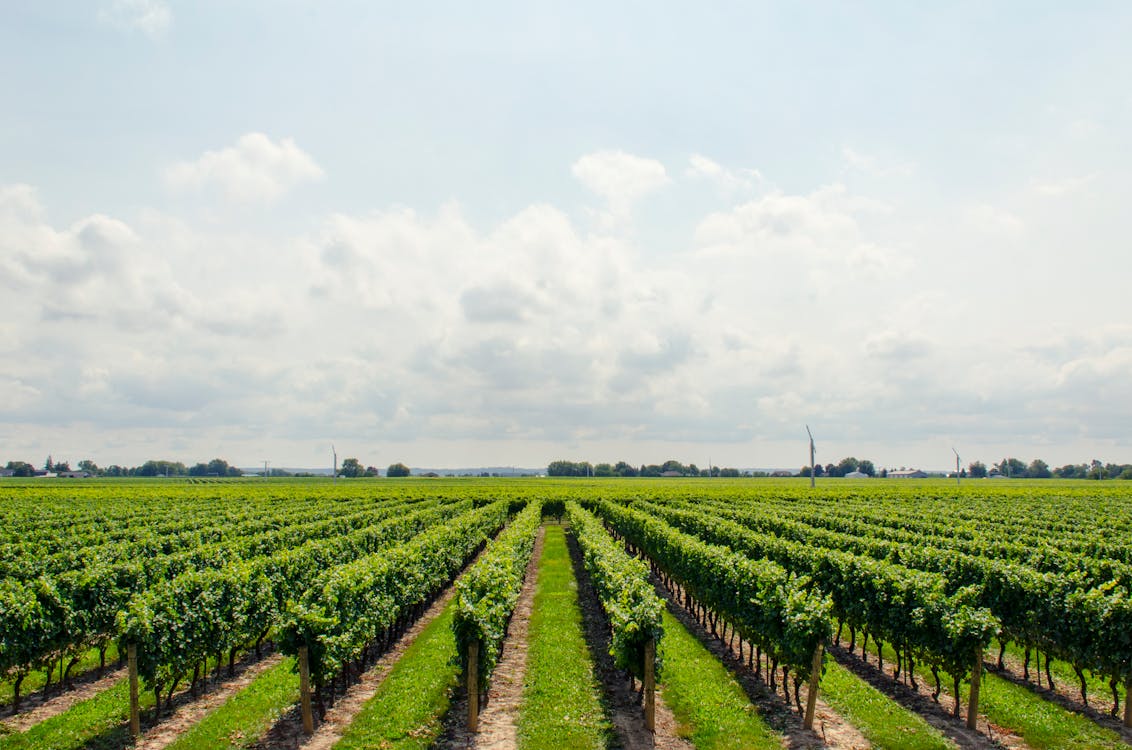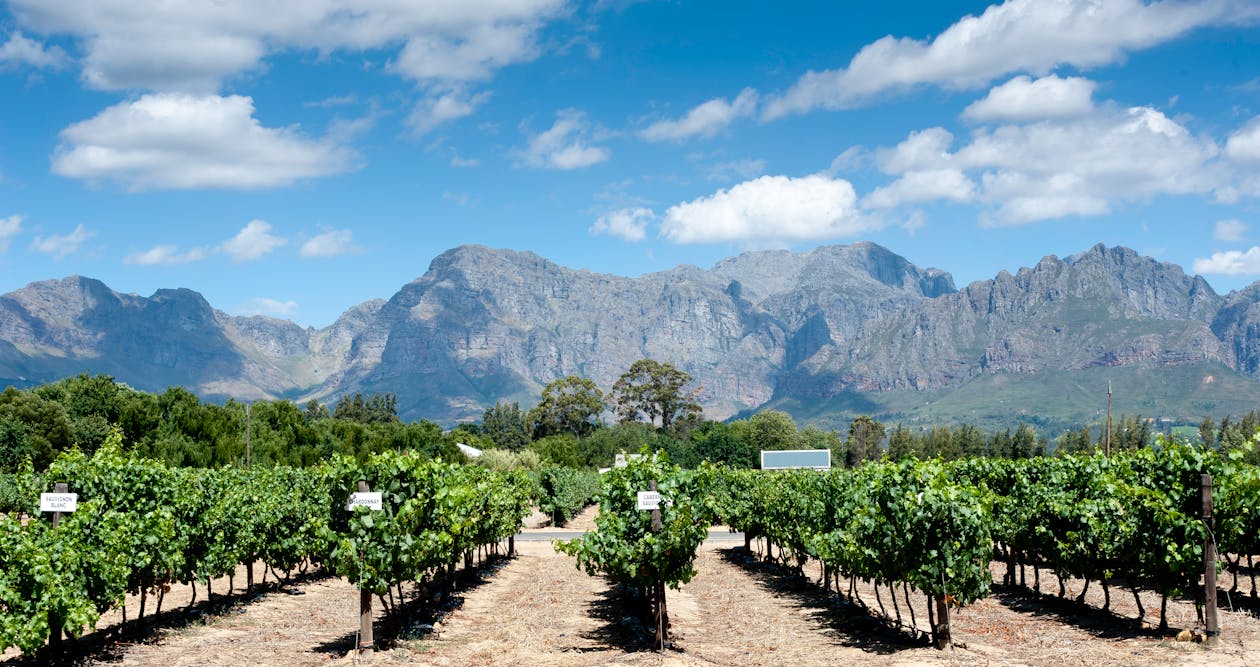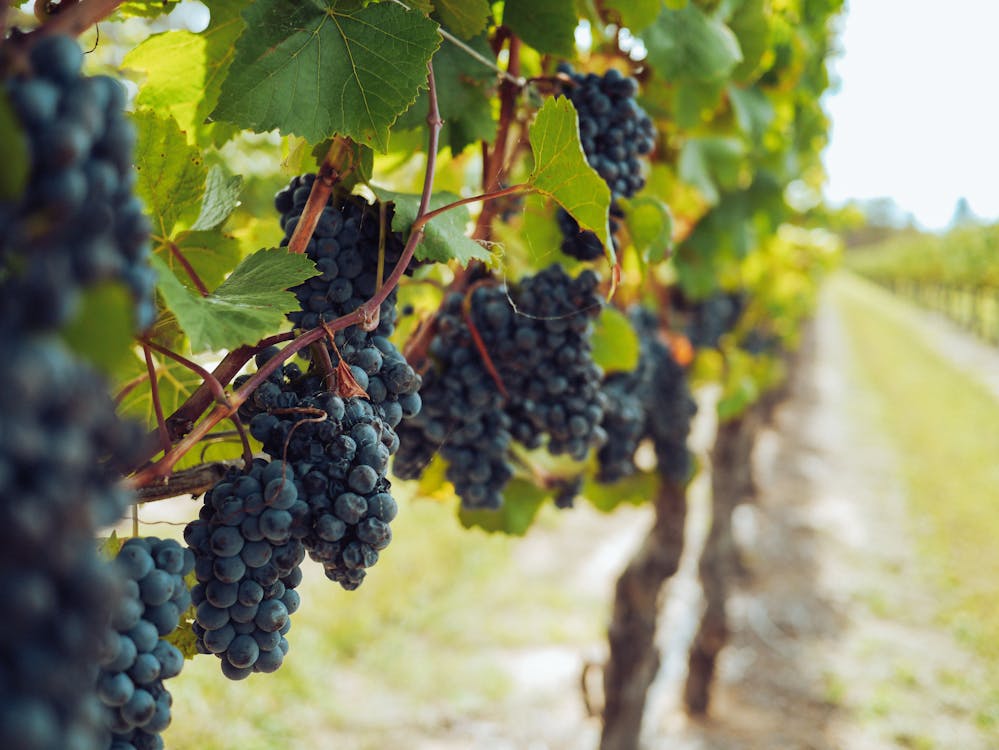Most people know that wine comes from grapes, but not everyone knows what happens between the vine and the glass of wine. Wine grapes are a far cry from the grapes you see at your local grocery store or farmers’ market, though all of them belong to the same plant family. They vary greatly in size, shape, color, and taste, but they all produce exactly what winemakers need to make their products. Learn more about wine grapes with these 10 can’t-miss facts.
1) South Africa leads the global production of red wine grapes

Wine grapes are extremely crucial to the wine industry and South Africa is currently dominating the global market with more than one-third of all red wine grapes grown in 2016. Red wine grape production has a lot to do with geography, climate, soils, vineyard practices, and winemaking techniques. The majority of South Africa’s red grape production takes place in its Northern Cape region which is well known for its Mediterranean climatic conditions such as long, hot summers and very dry winters.
2) France dominates the world’s supply of white wine grapes
When it comes to white wine grapes, France takes the cake. Around 59% of the world’s total supply is cultivated in France. According to Decanter, there are also about 60 grape varieties grown in the country – more than any other nation on earth. The grape most commonly associated with French wine is Sauvignon Blanc, which has a reputation for giving wines light flavors and fruity fragrances.
3) Chile is the second largest producer of red and white grape

South America has the second largest producer of grapes, coming in at 43% of the world’s total. Chile is the country with the most grape production and is able to produce both red and white grapes. One of Chile’s most prized grapes is Pinot Noir. Other noted grape varieties include Sauvignon Blanc, Cabernet Sauvignon, and Chardonnay.
4) The global acreage of vines expanded from 1.36 million in 2005 to 2.28 million acres in 2010
The global acreage of vines expanded from 1.36 million in 2005 to 2.28 million acres in 2010, according to a report by the International Organization of Vine and Wine (OIV). Though the number of planted vines is high, the vast majority still comes from just four countries: Italy, France, Spain, and Portugal. What’s more surprising is that a mere 10 grape varieties make up three-quarters of all the grapes grown today.
5) Some countries with large acreages make little or no wine themselves

Some countries with large acreages make little or no wine themselves, like Spain and France. Spain, for example, has been steadily decreasing its annual grape production over the last two decades because of the strong demand for Spanish wines overseas.
6) An acre is slightly more than 43,560 square feet
An acre is slightly more than 43,560 square feet. This area is considered the minimum amount of land needed to sustainably produce grapes for winemaking. The vineyard must be in close proximity to an area with a high groundwater table and a deep, easily accessed alluvial soil that allows for easy drainage. In general, both red and white wines are made from the same grape variety; however, different grape varietals are usually harvested based on the desired flavor characteristics of the wine to be produced.
7) U.S. acreage has nearly doubled since 1980 to 616,000 acres in 2010

Though vineyards are more commonly associated with European countries like France and Italy, America is quickly gaining a reputation for some of the best wines in the world. In fact, the country’s grape acreage has nearly doubled since 1980 to 616,000 acres in 2010. Today there are more than 80 grape varieties that can be grown in California alone, making wine a booming industry in the United States.
8) The United States is among the top six producers globally for both red and white grape varieties
A lot of people don’t know that the United States is among the top six producers globally for both red and white grape varieties. This includes some of the finest varietals, like merlot and chardonnay. In recent years, more vineyards have been planted in the Pacific Northwest than any other region in the U.S., which has created a boom in wine production there—specifically pinot noir, with Oregon being its best producer by far. Vintners are also using new methods to produce better quality wines, such as climate-controlled stainless steel tanks that can be kept at cooler temperatures than wooden barrels.
9) Most Americans drink less than three servings per week

Research has shown that the average American drinks less than three servings of wine per week. While it’s not a staggering number, drinking wine in moderation (or abstaining) has been proven to have significant health benefits. Plus, who doesn’t love a good glass of vino?
10) Land set aside exclusively for producing grapes increased by 25 percent between 2005 and 2010
All vines need land to grow in, but vines can be grown anywhere so long the climate is right. In California, grapes are grown throughout the state. The wine industry has undergone a huge transformation in recent years and the amount of land set aside exclusively for producing grapes increased by 25 percent between 2005 and 2010.
